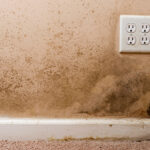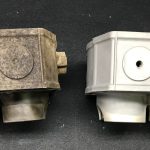Moisture or water in home air ducts can seem harmless at first; however, if ignored it could lead to serious problems like mold or mildew growth. Moisture in your ductwork can also indicate underlying problems that need to be addressed.
There are several common reasons for water in home air ducts. Moisture is a sign of low duct temperature. For this reason, during the heating season, unused air-conditioning ducts located in unheated rooms can collect moisture. Moisture or the water can also collect in the summer if cool air passes through a duct in a room that isn’t air-conditioned. Excess humidity in the attic or crawl space can also encourage condensation on the inside and outside of ductwork.
How to Prevent Moisture or Water in Home Air Ducts
1) Eliminate underlying issues.
Look for any sources of moisture that could be causing the problem. Do you see any water-pipe leaks or leaks in the roof? Do you have a humidifier that is turned up too high? Is the clothes-dryer vent free-flowing and leak-free? Is your furnace venting system free of leaks? Or are the bathroom vents and cook range vents leaking?
A leak in one of these systems could be causing the problem, and without addressing it directly, you’ll only be able to accomplish temporary solutions. A hygrometer will give you a good idea of the humidity levels in the house and tell you if they’re abnormal.
2) Use a dehumidifier.
After you determine these systems are working well, run a dehumidifier in the area where your air ducts are collecting water. This will reduce moisture in the air and prevent condensation in the ductwork.
3) Seal off unused A/C ducts.
If you still have moisture in your air ducts, seal off unused A/C air ducts, and supply and return vents in the winter. Don’t just close the dampers – they are not airtight. Cut foam-board insulation into a plug that is the size of the vent, or tape the duct closed with plastic sheeting. Just don’t forget to remove the blockage in the spring.
4) Insulate.
Insulating the air ducts will prevent them from cooling off and condensing the air inside. You can do this with standard duct insulation. In cold weather, homeowners can also circulate warm air through unused ductwork to prevent condensation.
Another option is to insulate the space where the ductwork is located. If you have an uninsulated attic, adding insulation will help prevent condensation from forming on cold ductwork.
Ducts Are Fuzzy
Hopefully, you discovered the moisture or water in home air ducts before it was too late. If not, you may be at risk of mold or mildew in your air ducts. IBX Services air duct cleaning services and duct inspections give homeowners peace of mind and healthy indoor air quality. Just give us a call at +1-416-252-5959 or schedule an appointment at support@ibxservices.com.











